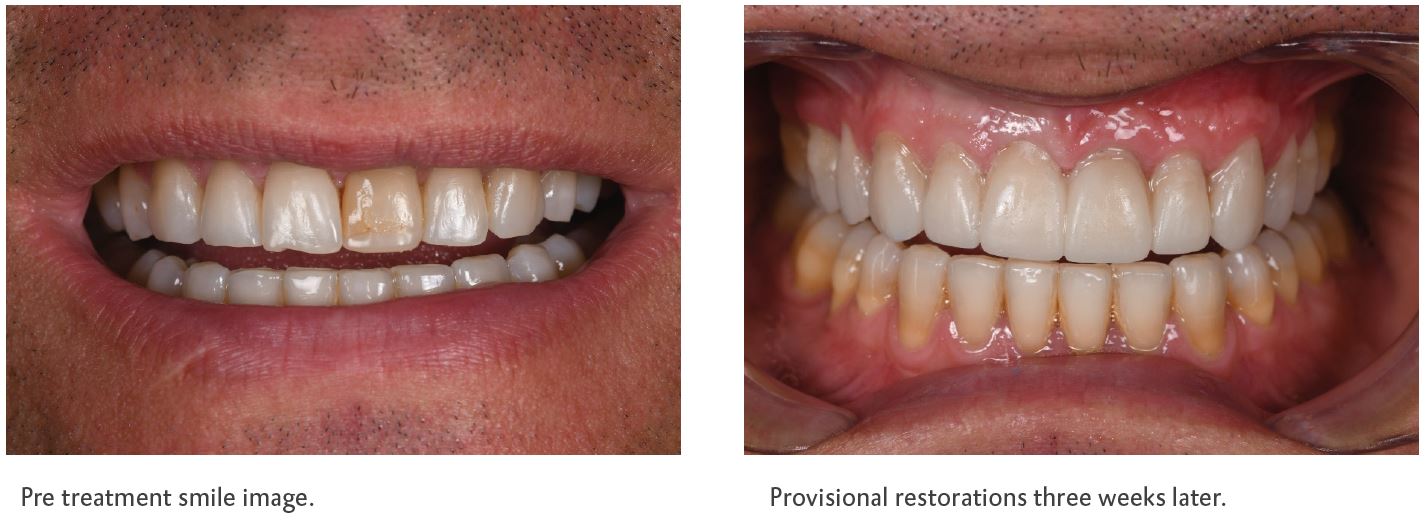Written by Dr. Snyder
Many of the patients we see have worn and damaged dentitions from clenching and grinding. Restoring these patients can sometimes bring about challenges while provisionalizing the dentition.
Whether it is restoring worn anterior teeth that just need veneers or crowns, a whole arch that needs to be restored immediately or staged over time, or an entire dentition, some provisional materials may not be able to withstand the occlusal pressures and forces from a heavy bruxism patient.
If you have ever had a patient that just keeps breaking their temporary restorations due to bruxism, you may have asked yourself if there is anything stronger or different you can use to prevent the problem. It’s natural for temporaries to brake or come off time to time. However, on larger cases that have had more severe wear and there is a heightened risk of bruxism failure using a stronger provisional material may provide significant benefits to both you and the patient. So, what materials can we use? Traditional methylmethacrylates and modern bisacryls can both be used, but theyboth have unique characteristics.
Methacrylate provisional materials have been available for provisional fabrication for a long time and can be divided in three subgroups: methyl-methacrylates, ethyl-methacrylates, and vinyl-methacrylates. They typically offer good fracture resistance and polishability, but have higher polymerization shrinkage, heat from the exothermic reaction that could be harmful to pulpal tissue and typically are less esthetic than other modern materials.
Modern bisacryls offer the convenience of speed, durability and esthetics. For example, Luxatemp Ultra (DMG) is my go-to provisional material for cosmetic cases. More recently, for my heavy wear and bruxism cases I have been using the newer LuxaCrown (DMG). It has approximately 30% higher flexural strength and compressive strengths compared to Luxatemp Ultra and is said to have a longevity in the mouth that is long-lasting. It has the same beautiful esthetics that we have come to love with Luxatemp Ultra.
In all my heavy wear cases over the past year where patients had extensive wear on their teeth, I have relied on LuxaCrown (DMG) and have not seen a patient break or chip a provisional veneer, crown, or bridge yet. One of my more recent cases displays the esthetics and strength of the material where we had lengthened ten upper teeth. The provisional restorations still look just as great both esthetically and structurally after having been in the patient’s mouth for several weeks.
LuxaCrown is a game changer for durable, directly fabricated provisional restorations.

